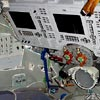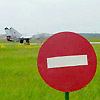
|
|
| original brief | russian proposals | experiments | stem cell | physiology | crystallisation |
Experiment Groza (Thunderstorm)Complex investigation of the atmospheric, ionospheric and radiation phenomena above the African continent connected with thunderstorm activity and seismic processes. Purpose of experimentComplex study of the atmospheric phenomena above the African continent on-board the ISS RS. Tasks
Equipment to be usedHardware "Scorpios", "Molniya - VFS" (or/and "LSO"), radiometer Р-16, still camera, video camera, onboard computer, dictophone, spent materials. Composition of the equipment.Equipment "Scorpios":
Assignment of the equipment
Equipment "Molniya-VFS":
Assignment of the equipment
Principles of the equipment operation.Weak (on intensity) digital images of short-term atmospheric luminescence amplify by the optical-electronic circuit and are recorded on the magnetooptical disk. Main characteristics of the equipment:Equipment " Molniya-VFS"
Work of crew with the equipment.The "Scorpios" equipment is installed on place of experiment realization and is connected to the onboard socket. Information recording is performed automatically to the recorder. After returning to the Earth the decoding of information and mapping of events is implemented. The “Molniya-VFS” equipment is installed with the help of special rotary bracket К-03 on an illuminator no. 1 (or no. 2) of Service module. During processing of data obtained the simultaneous registration of events and phenomena (time recording) is necessary. |
|
|||||||||||||||||||||||||||||||||||||||||||||||||||||||||||||||
 |
All original content © HBD, All Rights Reserved. Please credit www.africaninspace.com for any original images or content you source from this website. Links do not represent endorsements. All comments / suggested references and images are copyrighted by their posters. Project managed by Interactive Africa. Internet Engineering by Deimos Information Engineering. |




